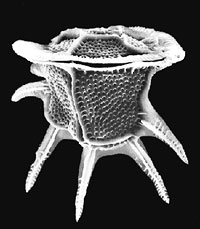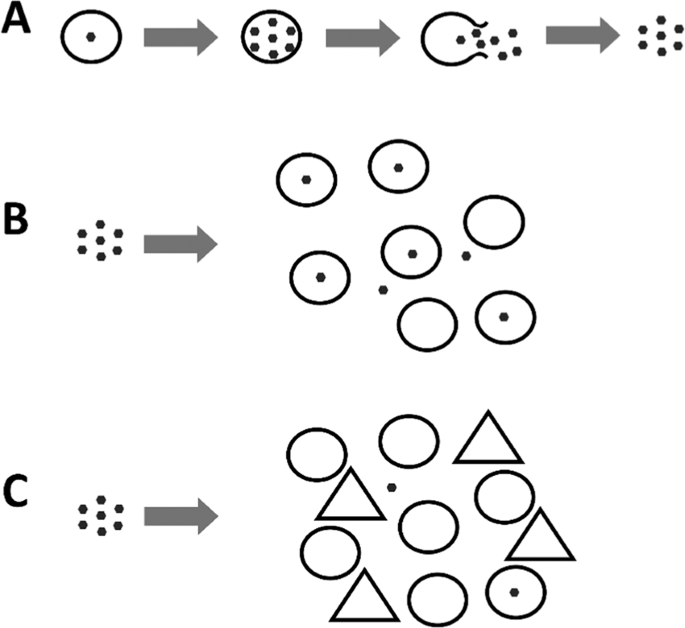Dinoflagellates
Dinoflagellates are the other primary form of large phytoplankton with about 2,000 species. Unlike diatoms, dinoflagellates are mobile through the use of a flagella. Also unlike diatoms, they do not have an external skeleton made of silica, however they are protected by cellulose. Dinoflagellates are typically solitary and do not form chains like diatoms. Like the diatom they reproduce through fission. Once divided, each half retains half of the original cellulose armor and replaces the missing half to form a new whole. Some dinoflagellates can produce toxins that are released into seawater. When there are large blooms, a phenomenon known as red tide occurs. In some cases increased levels of dinoflagellate toxin may cause other marine life to die. The symbiotic algae found in many corals, or zooxanthellae, are actually a non-mobile species of dinoflagellate. Dinoflagellates have strong bioluminescence and have been a source of fascination for sailors and other mariners as their ships pass through waves which become lit up by these organisms at night. See also “What are dinoflagellates?”
Dinoflagellates are typically solitary and do not form chains like diatoms. Like the diatom they reproduce through fission. Once divided, each half retains half of the original cellulose armor and replaces the missing half to form a new whole. Some dinoflagellates can produce toxins that are released into seawater. When there are large blooms, a phenomenon known as red tide occurs. In some cases increased levels of dinoflagellate toxin may cause other marine life to die. The symbiotic algae found in many corals, or zooxanthellae, are actually a non-mobile species of dinoflagellate. Dinoflagellates have strong bioluminescence and have been a source of fascination for sailors and other mariners as their ships pass through waves which become lit up by these organisms at night. See also “What are dinoflagellates?”















